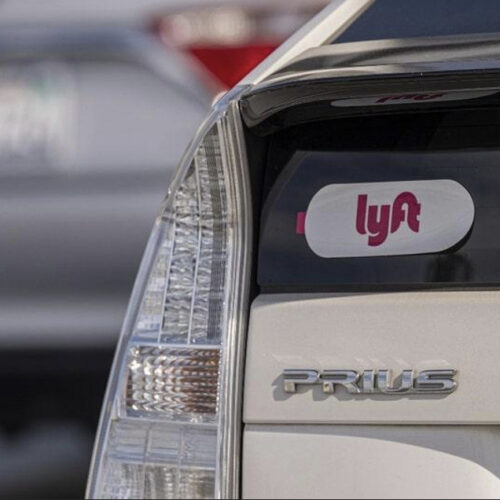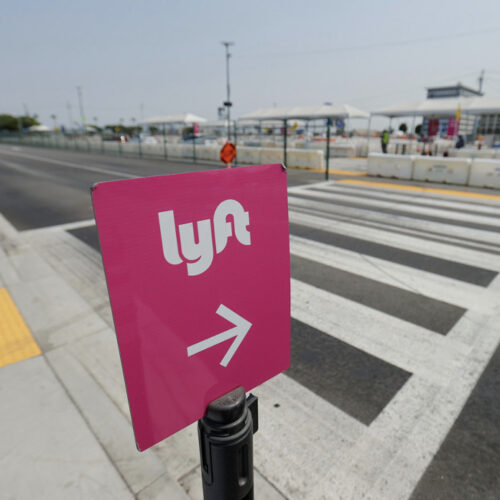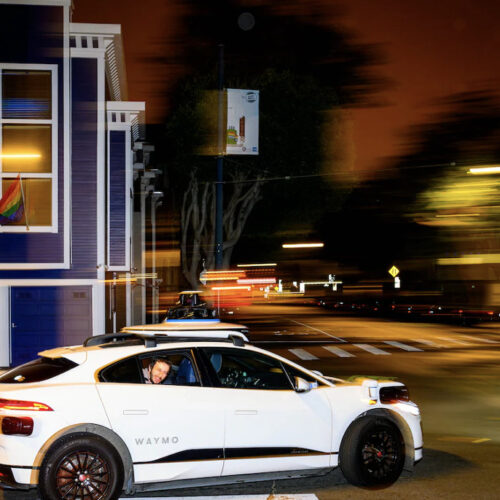In one of many efforts to stay afloat, Lyft is considering leaving surge pricing behind since riders don’t like it. However, where will that leave drivers? Also, in an attempt to increase revenue, Lyft will start having display ads within their app.
Lyft Ceo Wants To Curb Surge Pricing: ‘Riders Hate It With A Fiery Passion’
Topic Originally Appeared On Fox Business
Summary
Lyft is trying to curb surge pricing with an increased driver supply, according to CEO David Risher.
Risher said on the company earnings call this week that Lyft saw an “improved balance in our marketplace” of active riders and drivers. Lyft rides with surge pricing in the second quarter went down 35% compared to the prior quarter, the CEO reported, and a “larger percentage of ride intent converted into rides taken.”
The number of drivers using Lyft and the amount of hours they did so both increased year-over-year, with the former doing so by over 20% and the latter by over 35%, according to the company….

My Take
They are taking from one to appease the other, which likely won’t work in their favor. Sure, eliminating surge pricing sounds great…for riders. But what about the drivers who will now be stuck in traffic or outside concert venues or sporting events, making standard low pay? Do you really think drivers will do that? I don’t.
I think this will blow up in Lyft’s face. Riders will want to book a ride, but there won’t be any drivers online nearby or willing to accept the request. They’ll be stuck switching over to Lyft’s competitors to book a ride at a higher price.
I really don’t see this ending well for the company. For customers, it sounds great at face value, but if it means none of the drivers will be willing to pick you up, it turns sour quickly.
Lyft To Display Ads In App In Effort To Boost Revenue
Topic Originally Appeared On Reuters
Summary
Ride-sharing platform Lyft (LYFT.O) will start displaying advertisements on its app, the company said in a blog post on Thursday as it looks to create a more stable source of revenue.
The move will help Lyft, whose business is completely dependent on ride-hailing. Its larger rival Uber Technologies (UBER.N) has a more mature advertising business along with deliveries and freight brokerage.
It will also boost CEO David Risher’s plan to turnaround Lyft by maintaining competitive prices and cutting costs, as well as through a potential sale or strategic tie-up for its bike unit….

My Take
Again, this just feels like a wild stab the Lyft is making in order to try to make money and prove they are still relevant. They should have been doing this for a while, not just starting this now.
Take a look at their biggest competitor Uber. Uber has had ads in their app at least for a few months now. Plus, Uber expanded to food delivery and freight and other dimensions of the business while Lyft feels a lot more static, stuck in the rideshare only avenue.
California Just Opened The Floodgates For Self-Driving Cars
Topic Originally Appeared On Washington Post
Summary
California regulators voted Thursday to allow self-driving car companies Waymo and Cruise to offer 24/7 paid taxi service in San Francisco, a major win for the industry that could pave the way for more widespread adoption of the technology.
Cars without drivers have become a common sight on San Francisco’s winding, hilly and often foggy streets. Thursday’s vote stripped most limitations on operating and charging for rides, essentially creating more ride-hailing services like Uber or Lyft — just without the drivers.
It’s a pivotal moment for the autonomous transportation industry, expanding one of the biggest test cases for a world in which many companies envision not needing drivers at all. For years, companies from Amazon to Google have experimented with self-driving vehicles, something that could prove incredibly disruptive to the labor economy if it ever materializes en masse….

My Take
This is a big move for the state of California. This is a step toward self-driving cars becoming the norm. Now, I fully believe it will still take several years before it will be the actual norm. There are too many question marks, too many possibilities, and too many people who need to feel like they are in control and who won’t trust technology to literally take the wheel.
With California being a hub for the majority of the ridesharing platforms as well as autonomous vehicle companies, this is where the magic is going to continue happening. Buckle up and keep an eye on self-driving vehicles. We’re getting there one step at a time.
Is It Cheaper To Refuel Your EV Battery Or Gas Tank? We Did The Math In All 50 States
Topic Originally Appeared On Washington Post
Summary
Gasoline cars are cheaper to refuel than electric vehicles.
I’ve heard this claim pop up everywhere from Massachusetts to Fox News over the past two years. My neighbor even refuses to plug in his hybrid Toyota RAV4 Prime over what he calls ruinous electricity rates.
What gives?
The basic argument is that electricity prices are so high it has erased the advantage of recharging over refilling. This cuts to the heart of why many people buy EVs, according to the Pew Research Center: 70 percent of potential EV buyers report “saving money on gas” as among their top reasons.
So how much does it really cost to refuel an EV?…
My Take
Gas prices are frustrating and are still on a general rise. There maybe small dips, but they are few and far between, and the rise is always higher than where it had been before. It’s getting more and more difficult to justify having a gas-powered vehicle. But is having an EV more affordable overall? This article tackles that question, broken down into each state as well as vehicle type.
And of course, drivers have to take into consideration how many miles or what range they need available for their vehicles on any given day or at least on a regular basis.
This is a very extensive article that I think would benefit everyone, especially if you’re considering making the switch without wanting to do the bulk of the research yourself.
We follow EV news pretty closely. If you want the latest updates on EV, check out our Facebook page geared toward all things EV.
Instacart Now Accepts EBT Snap Payments In All 50 States
Topic Originally Appeared On TechCrunch
Summary
Instacart now accepts Electronic Benefits Transfer for Supplemental Nutrition Assistance Program (EBT SNAP) in Alaska, the company announced on Thursday. With this expansion, Instacart now accepts SNAP in all 50 states and Washington, D.C.
Today’s announcement comes a year after Instacart committed to making EBT SNAP payments available nationwide. Instacart now offers online SNAP acceptance from more than 120 retail banners across more than 10,000 stores.
“Our mission is to create a world where everyone has access to the food they love. By expanding online SNAP acceptance to all 50 states, we’re delivering on our mission by modernizing access and connecting more communities to affordable and nutritious foods,” said Dani Dudeck, Chief Corporate Affairs Officer at Instacart, in a statement. “Now SNAP families in every state can enjoy the benefits of online grocery from a variety of local retailers that meet their unique tastes, needs and personal budgets….
My Take
I say this is a great thing. If you’re already struggling and needing state assistance, let’s make it easier to get your food. Sometimes people don’t have the time or the energy to physically go to the store themselves. Or they are disabled and physically can’t make it to the store. Now, they will be able to use Instacart’s services to their fullest extent.
This is a beautiful thing. I applaud Instacart for having this available in all 50 states now. Well done, you did something right.
RSG in the News This Week
Read more trending topics in the news this week:




